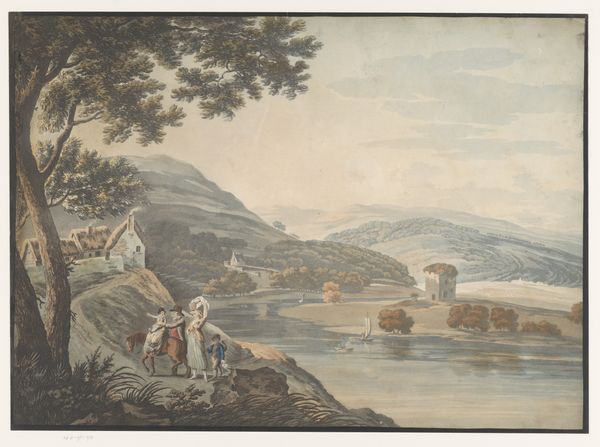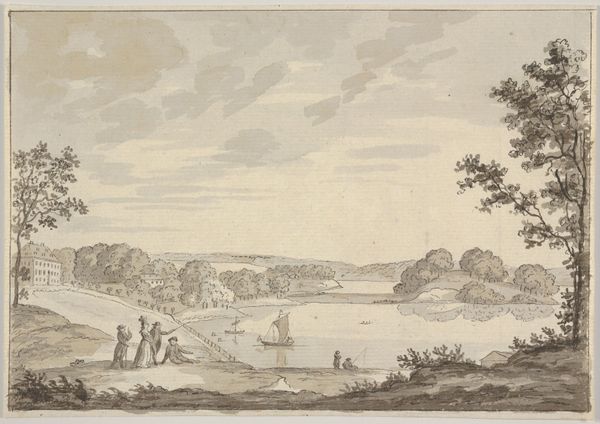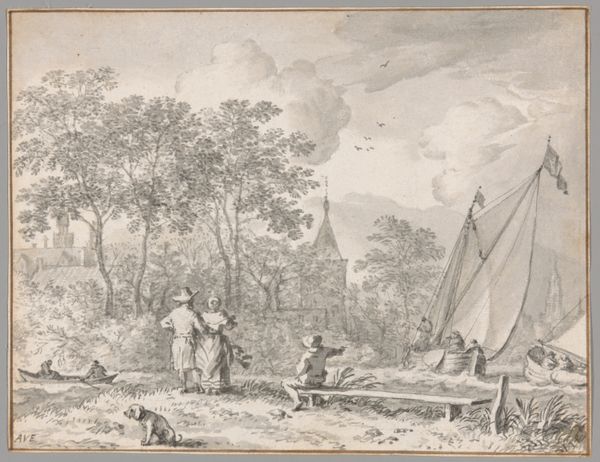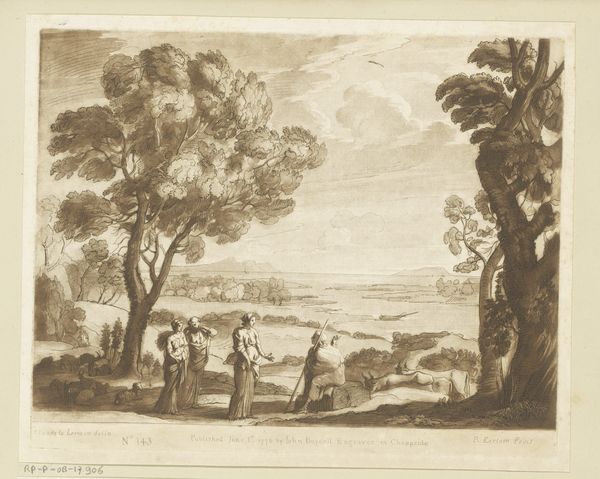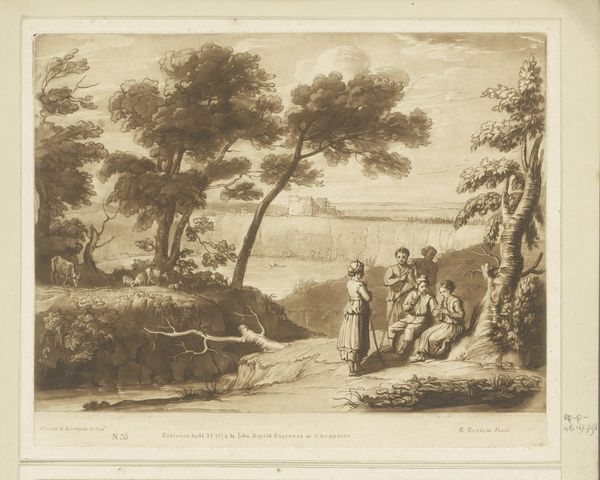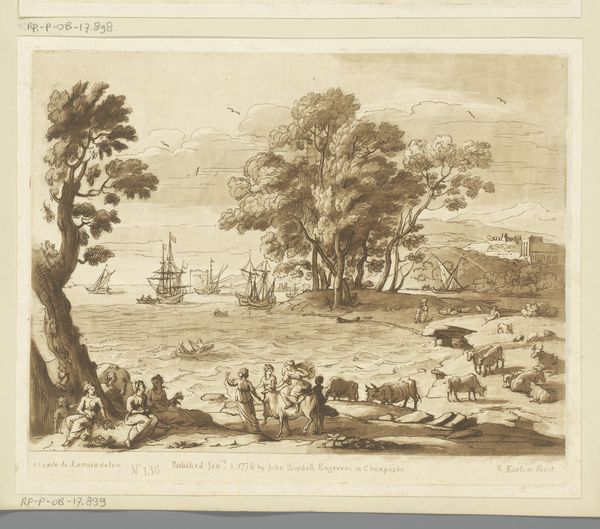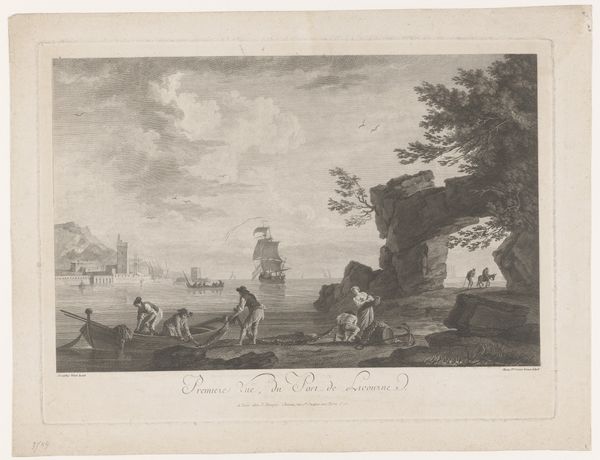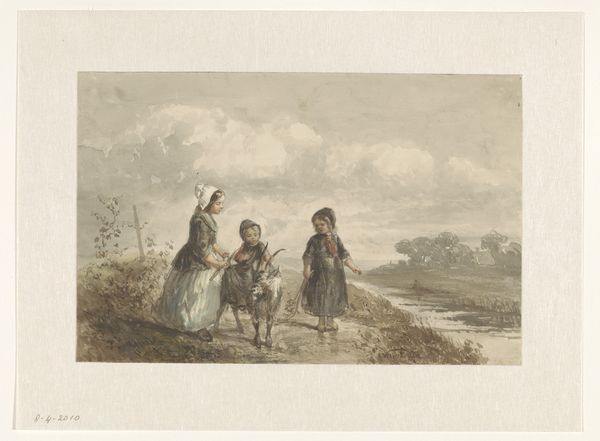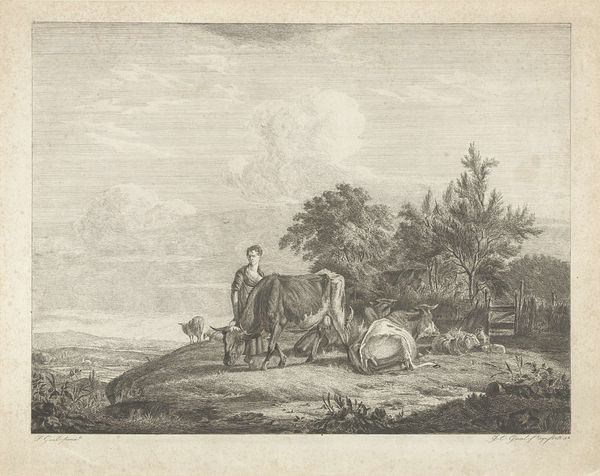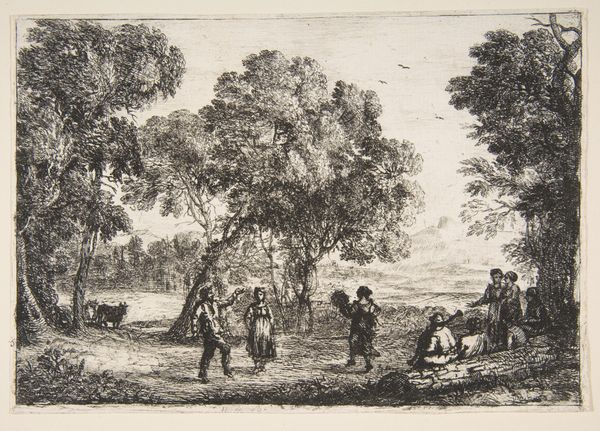
View of London with St. Paul’s in the Distance: A Family Pausing on a Road 1787
0:00
0:00
Dimensions: Sheet: 7 15/16 in. × 12 in. (20.2 × 30.5 cm)
Copyright: Public Domain
Curator: This watercolor drawing, made around 1787 by Julius Caesar Ibbetson, is titled "View of London with St. Paul’s in the Distance: A Family Pausing on a Road." It's currently housed here at the Metropolitan Museum of Art. What’s your first impression? Editor: Serene. Almost melancholic. The hazy, muted tones give a sense of quiet observation. It feels like a glimpse into a moment rather than a grand statement. Curator: Absolutely. The figures, taking in the view of London, certainly lend a feeling of suspended time. The grouping almost forms a tableau of societal structure: parents, children, even a little dog...it speaks to a specific era. St. Paul’s Cathedral, in the distance, serves as both a geographical marker and perhaps a symbol of aspiration, don't you think? Editor: It anchors the scene, visually and symbolically. Religious institutions often served that dual purpose. I'm intrigued by the figures themselves. The family presented as a microcosm, observing the sprawling city and also performing their roles, is powerful, showing cultural continuity, as London expanded exponentially in the eighteenth century. Curator: Precisely. And Ibbetson was known for his plein-air work. It is fascinating how he balanced topographical accuracy with what we might now call "street photography." This piece could be perceived as genre painting with hints of history painting through the grand architecture on the horizon. Editor: His application of watercolor and use of open space are also vital. Notice how Ibbetson directs your gaze not through meticulously detailed rendering, but through strategically positioned masses of color and shade, influencing a gentle tone. Also, I feel like these "pauses" gained popularity as Britain’s power spread abroad. Was this simply observing, or something grander in scope? Curator: That's an insightful connection to wider imperial power. Consider also the implied privilege—leisure to enjoy the "view," as the masses flood into industrializing London. Editor: Yes! It reflects that emergent class who can contemplate the city rather than struggle within it. Thank you; viewing Ibbetson through the lens of class awareness reveals a fresh way to understand social division through visual expression in art. Curator: Agreed. This short observation reveals just how a "simple" scene can reveal the complexity of both society and personal perception.
Comments
No comments
Be the first to comment and join the conversation on the ultimate creative platform.
